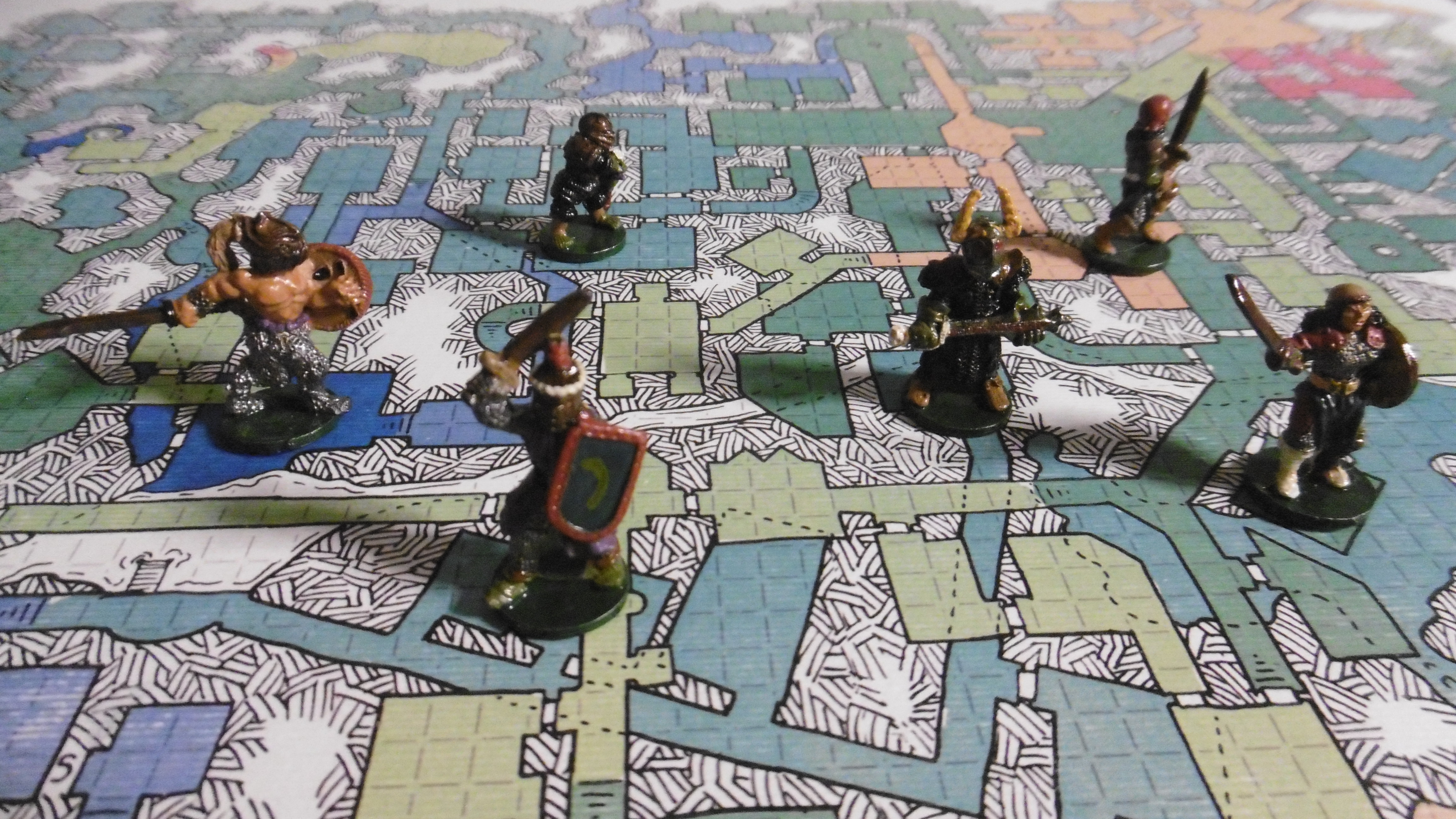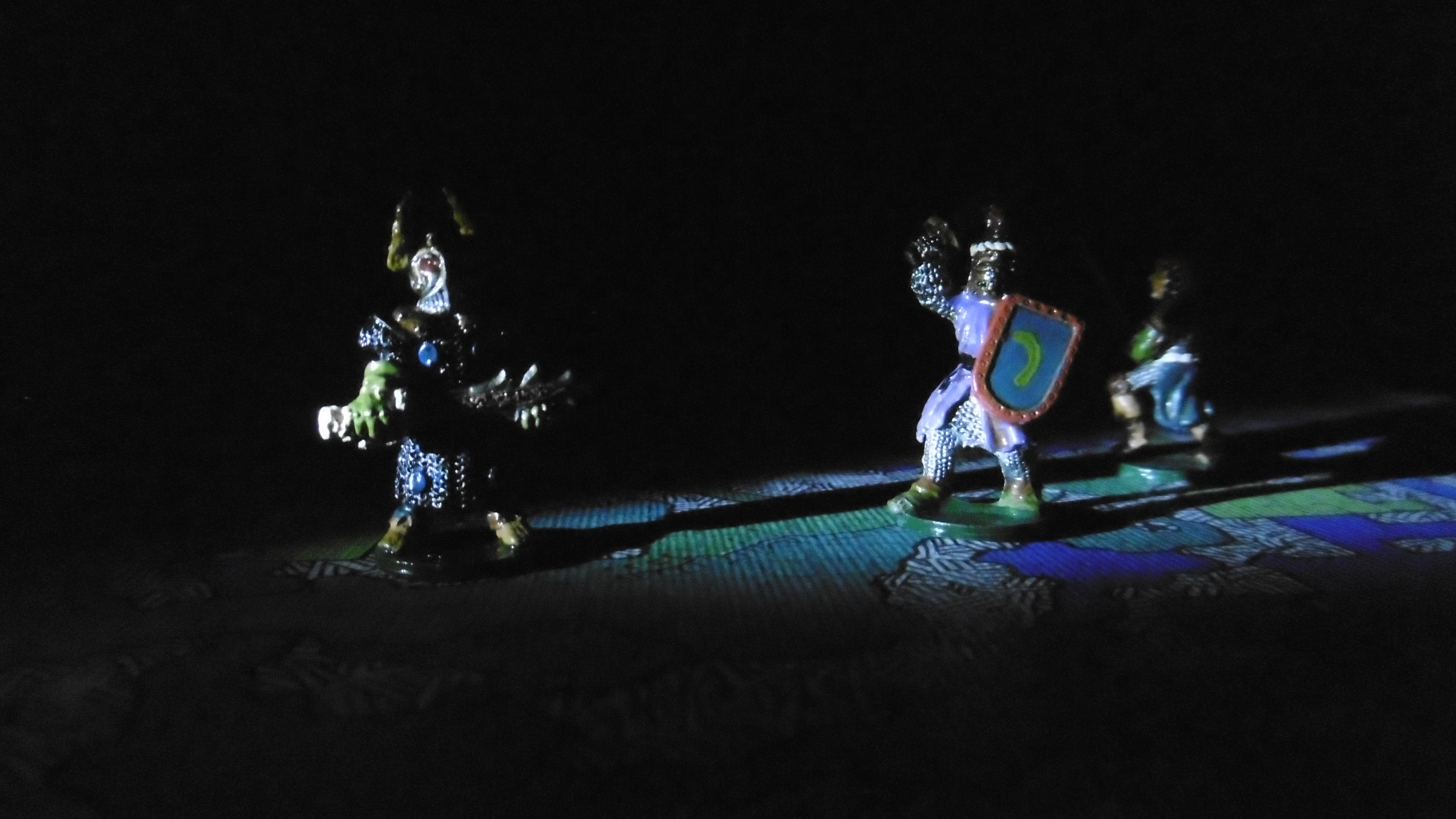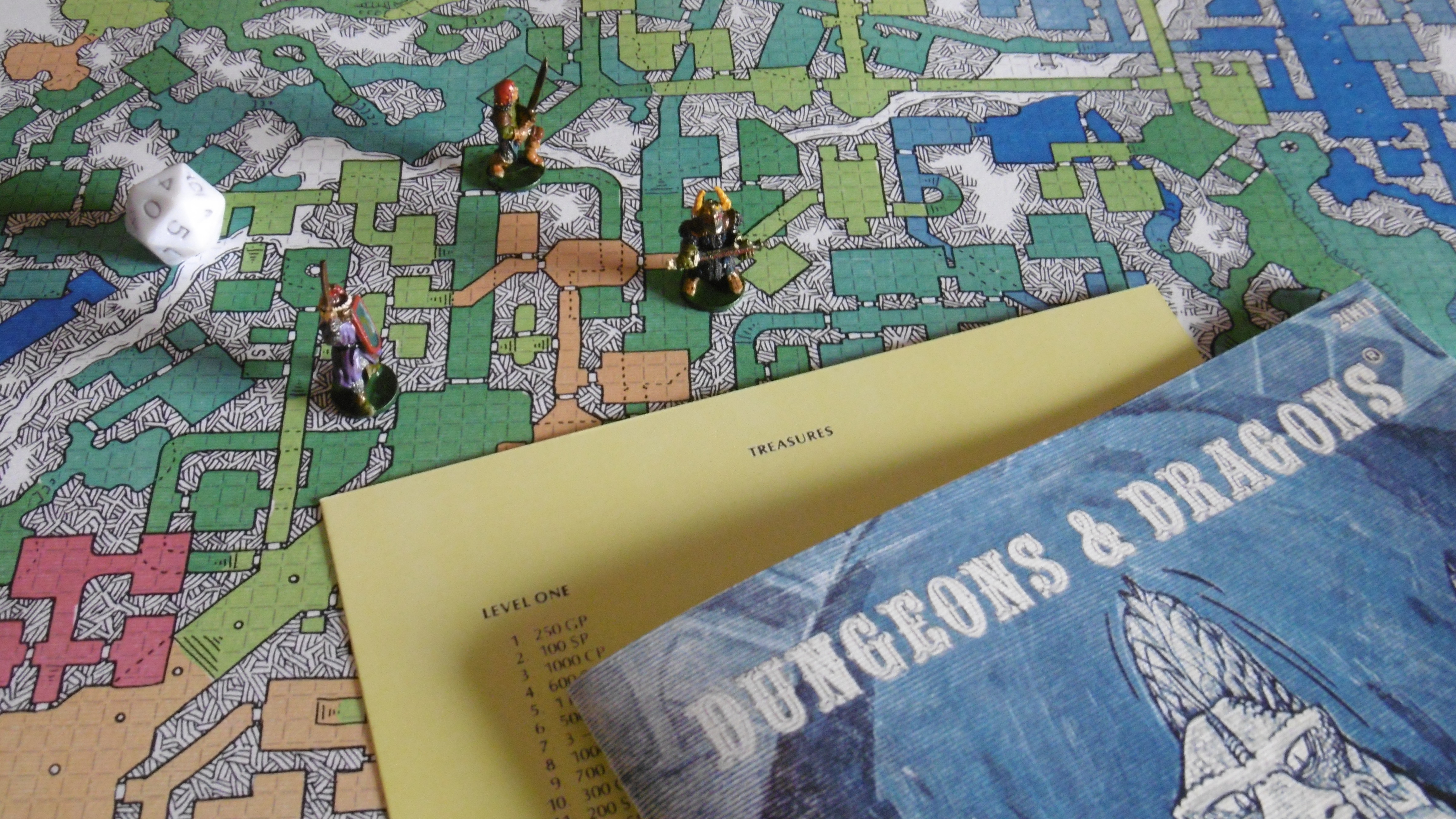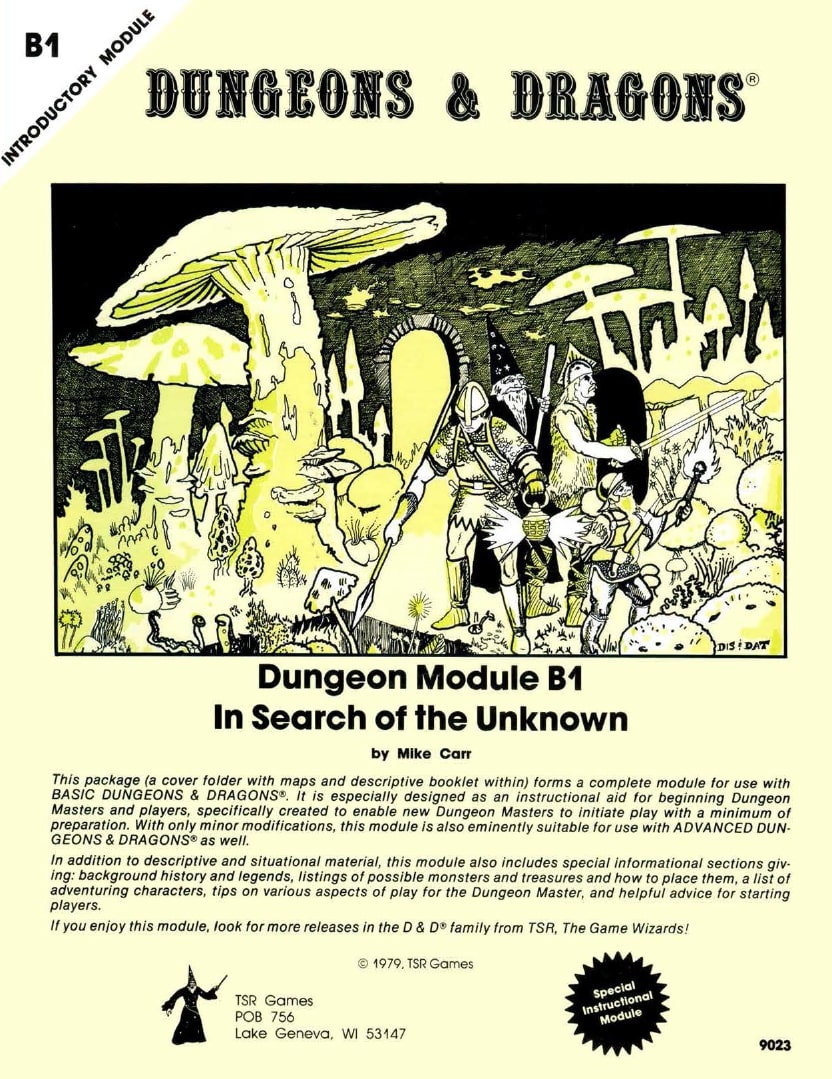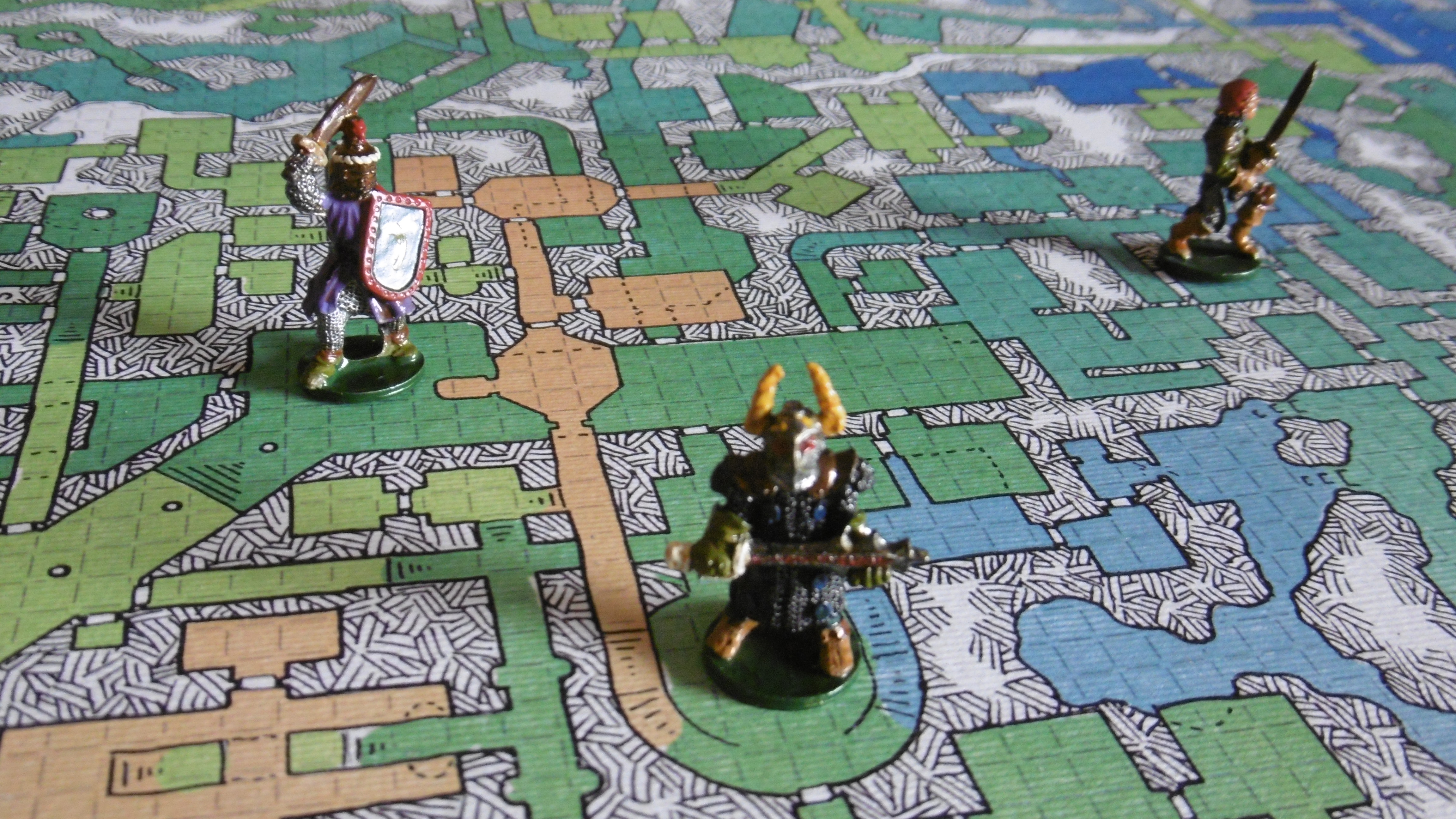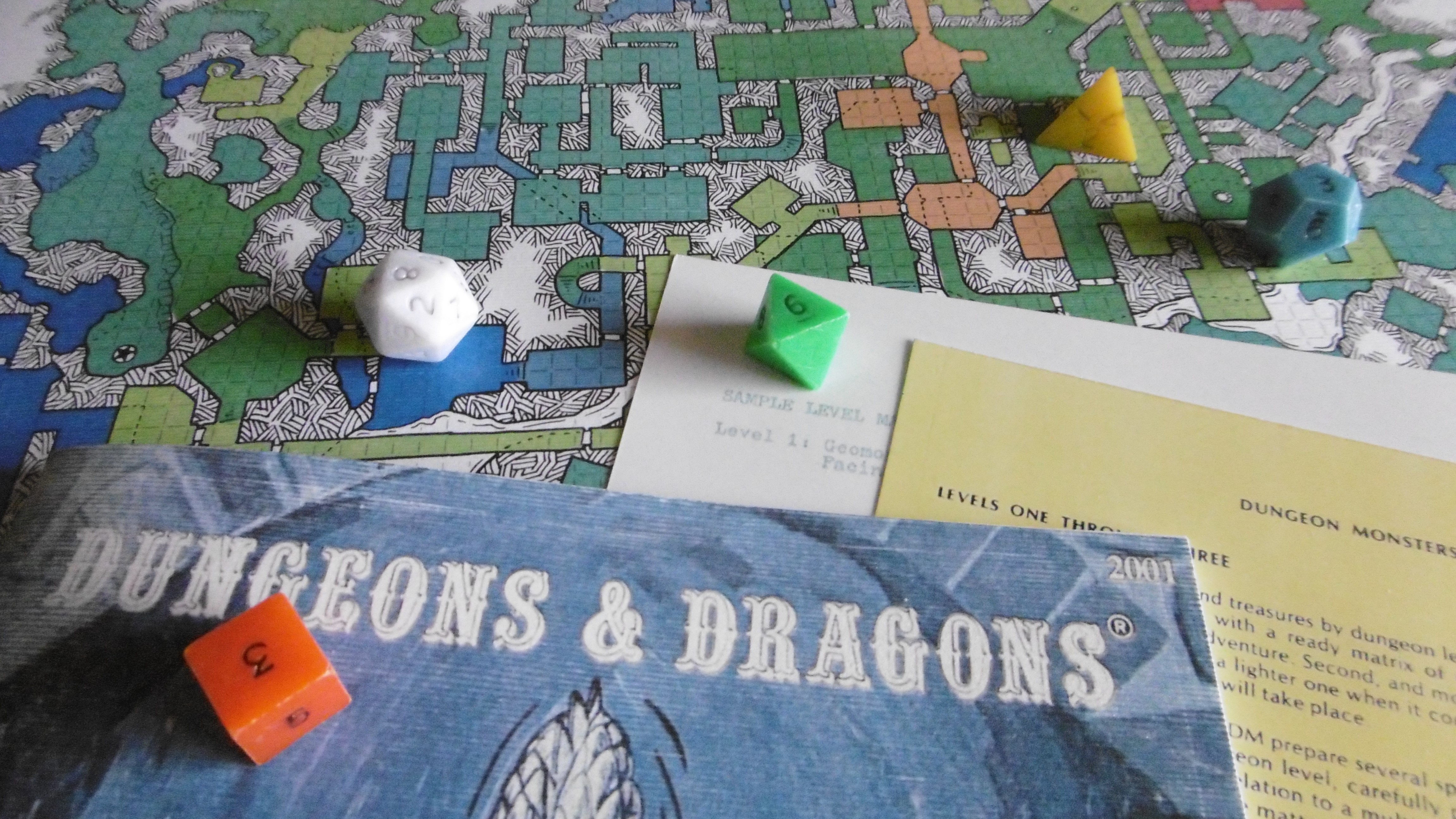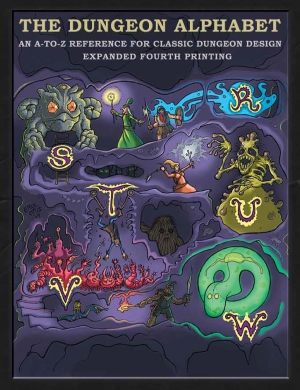More XP for Treasures
Where t equals one roll on the treasure table or 143 g.p.,
(5 areas × 2t) + (8 areas × t) + (2.5 areas × ½t) = 19.25t = 2,752 g.p. and change1,525 [from monsters] + 2,752 [treasures] = 4,277 XP
Therefore, the ratio of stocked XP to that necessary is 4,277:6,513 or 66:100—not near 1:1.
—from “One Deadly Dungeon”
Earlier, we presaged failure for an expedition into The Deep Halls based on calculations of stocked experience points. Simply, there aren’t enough XP on Level 1 for even three characters to overcome the challenges in The Halls’ deeper depths.
We went on to calculate how much extra treasure we should add to Level 1 encounters to enable a clever party to gain an experience level before descending the stairs. A DM might balk at adding extra treasure. Many balk at adding so much.
A DM might balk at adding extra treasure. Many balk at adding so much.
Even my “Monty Haul” sensibilities are challenged by the results. To reach a deadliness ratio of 2:1, the total gold.jpgece value of treasures stocked on Level 1 comes to 11,368. Expecting a clever party to recover two-thirds of that, by the time they gain the 2nd level of experience each character will have acquired 2,500 g.p.
It isn’t so much the wealth as what the characters might spend it on that poses a problem. Assuming they invest it to ensure the success of further explorations, the obvious acquisitions are hirelings and spell scrolls. By the time they descend to Level 2, the party, as a whole, can afford three dozen of each. At the head of such an entourage with a satchel spilling scrolls, the party, now 2nd level, far outmatches the dreaming priests and the dungeon loses its luster—“no challenge, no thrill…” (Holmes, 22).
A method, not uncommon in this century, to resolve the dilemma is to award two or more XP per g.p. Here I propose a few ways we might use more XP in lieu of more treasures.
Again, we are treating The Deep Halls as a closed dungeon campaign. The problem, too few XP on a level, does not exist in an open campaign, in which the party is not bound to the multi-level dungeon for all their experience.
In this article, I spare you the math.1 To some degree I spare myself the math as well; I made an electronic spreadsheet. Now I compute the deadliness ratio using combinations of the various treasure sequences and party size adjustment schemes using “Amon-Gorloth’s Twisted and Nightmarish Deadly Dungeon Calculator.” The machine uses the more accurate 51 encounter areas (instead of 50) and rounds fractions, in most cases, up from the half.
Reading Map
Notation
A treasure sequence consists of the number of rolls on the Monster & Treasure Assortments’ treasure tables for double, single, and half treasures to determine the amount of treasure in an encounter area. (See also “Flying Dungeon Stocking Table by the Bluebook.”)
Each proposal below is comprised of an expanded treasure sequence, which includes a party size adjustment method, and is accompanied by the average earned XP and wealth (in g.p.) of a single character upon reaching 2nd experience level and the number of magic items the party as a whole recovers.
Expanded Treasure Sequence {Deadly Dungeon Ratio} [Per Character XP, per character g.p., Magic Items per Party]
The expanded form shows the treasure sequence for the base party size (in our case three) with the XP award for each gold piece in parentheses, followed by a caret (“^”) and the party size adjustment sequence and, optionally, the deadliness ratio (hereafter called the “Deadly Dungeon Ratio”) in braces. In the discussion below, I bracket the average experience and wealth per character with the number of magic items acquired by the whole party. This bracketed information pertains to the base party size.
Number of Rolls for Double-Single-Half Treasures(XP per g.p.)^Adjustment for Double-Single-Half Treasure Rolls(XP per g.p. adjustment){Deadly Dungeon Ratio}[XP per character, g.p. per character, number of magic items per party]
D-S-H(X)^D′-S′-H′(X′){DDR}[XP/character, g.p/character, magic items/party]
Expanded Treasure Sequence Example
Long form:
2-1-½(1)^1-0-0(0){67:100}[723 XP, 470 g.p., 1]
The default treasure sequence, awarding 1 XP per g.p., adjusted by one roll for double treasures per additional character, falls to two-thirds of a 1:1 ratio; a character earns 723 XP and has 470 g.p., and the party carries one magic item.
Since the XP for gold is one for one and not adjusted, the parenthetical notation may be omitted.
2-1-½^1-0-0{67:100}[723 XP, 470 g.p., 1]
Short form:
2-1-½^1-0-0{67:100}
The short form shows only the treasure sequence, with XP for gold if not one for one, and the party size adjustment method. The Deadly Dungeon Ratio (shown here) is optional.
Unless otherwise stated, the figures for each proposal assume a 2:1 deadliness ratio and a clever party of three, which earns half the XP stocked.
Sparse Treasure
Using the default treasure sequence 2-1-½—derived from instructions in Monster & Treasure Assortments, Level 1’s 51 rooms contain 2,818 g.p.,2 which is, at one for one, a quarter the XP from treasure necessary and 8,700 XP short of the total needed to hit the 2:1 ratio.
2-1-½[723 XP, 470 g.p., 1]
Awarding 4 XP for each gold piece brings us neatly to a 2:1 ratio, only 238 XP short, while keeping treasure awards sparse.
2-1-½(4)^1-0-0{2:1}[2,132 XP, 470 g.p., 1]
Adding one roll per additional character to double treasures, larger parties earn somewhat less XP and gold, counted in a few tens per character.
Smaller Parties, Greater Risk, Greater Reward
Because we don’t reduce the number of monsters in an encounter below the given range or the treasure rolls below the default sequence, parties of one or two characters gain much more gold and experience. Such small parties, facing greater risks, earn greater rewards.
The reverse is also true. As discussed in “Adjusting for Party Size,” larger parties have a wider range of special capabilities and more tactical options. The rewards per character decrease as the size goes up.
Deadly Dungeon Ratio 1:1
A DM more skeptical than yours truly about the necessity of overstocking a closed dungeon may target a 1:1 Deadly Dungeon Ratio by awarding 2 XP for each g.p.
2-1-½(2)^1-0-0{1:1}[1,193 XP, 470 g.p., 1]
In this case, the difference in XP and wealth per character as the party size increases varies even less.
Between Thrilling and Sparse
In “Adjusting for Party Size,” I used the thrilling sequence as an example. The expanded sequence looks like this:
9-4-1^1-1-0{2:1}[2,191 XP, 1,938 g.p., 3]
We can get a happy medium between the thrilling and default sequence by lowering the treasure and awarding two XP per gold.
4-2-1(2)^1-1-0{2:1}[2,131 XP, 939 g.p., 1]
The average wealth per character is twice as much but not extravagant. This sequence is notable in that the XP and g.p per character remains close to the same with increasing party size. Taking for given that larger parties have an advantage over smaller, clever players might take advantage of this, as there are only benefits to hiring non-player characters. The party of six recovers three magic items.
Light “Haul”
If you want to go a little “Monty Haul,” up the double treasures by one roll from the previous sequence. Note the Deadly Dungeon Ratio is 2.2-to-1.
5-2-1(2)^1-1-0{22:10}[2,375 XP, 1,061 g.p., 2]
The average experience and wealth drops slightly with each additional character, while the number of magic items goes up to three for a party of six.
Notes
1 Previous articles “One Deadly Dungeon” and “A ‘Monty Hall’ Dungeon” explain the underlying equations and show the math.
2 In earlier articles we rounded to 50 rooms and calculated 2,752 g.p. in total treasure.
